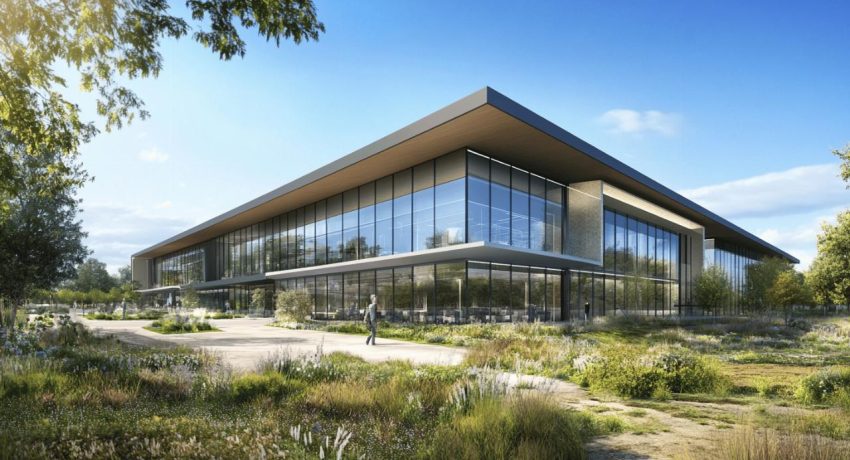Industrial aesthetics combine practicality with striking visual appeal, drawing inspiration from manufacturing facilities like Gorcy la Roche SAS to create spaces that honor industrial heritage while meeting modern needs. This design approach celebrates the raw, utilitarian elements of industrial spaces, transforming them into distinctive living and working environments.
Embracing industrial heritage in modern spaces
The industrial style has gained significant popularity in interior design and architecture, characterized by its emphasis on exposed structural components and authentic materials. This aesthetic draws from the honest functionality of manufacturing facilities, reimagining these elements for contemporary use while preserving their historical significance.
Preserving structural elements from manufacturing facilities
When renovating industrial spaces, maintaining original structural features creates authentic character impossible to replicate in new construction. Steel beams, columns, and trusses become focal points rather than elements to conceal. These components tell a story of the building's past while creating visual interest through their geometric patterns and substantial presence. Exposed brick walls, concrete floors, and visible ductwork further enhance the industrial narrative, providing texture and depth to interiors.
Incorporating raw materials for authentic industrial aesthetics
The judicious use of raw, unrefined materials forms the foundation of industrial design sensibility. Weathered wood reclaimed from factory floors brings warmth to spaces dominated by metal and concrete. Blackened steel elements reference manufacturing processes while creating striking visual contrasts. Polished concrete floors offer practicality and an understated elegance that improves with age. These materials celebrate imperfections – scratches, patina, and wear become desirable features that speak to history and authenticity rather than flaws to eliminate.
Adaptive reuse strategies from manufacturing facilities
Industrial spaces possess unique architectural elements that make them ideal candidates for innovative renovation projects. When approaching the transformation of manufacturing facilities like those once operated by enterprises such as Gorcy la Roche SAS, designers must balance preserving industrial character while creating livable environments. The conversion of these robust structures requires specialized techniques that honor their original purpose while adapting them to new functions.
Transforming production areas into functional living spaces
The conversion of manufacturing areas into residential or commercial spaces presents distinctive challenges and opportunities. Large open floor plans typical of industrial facilities offer flexibility in spatial arrangement, allowing for creative zoning approaches. Key transformation strategies include preserving structural elements like exposed beams, columns, and trusses while introducing partitions that maintain spatial flow. Original industrial features such as overhead cranes can be repurposed as decorative elements or functional components.
Environmental monitoring becomes crucial during such renovations, as former production sites may require remediation of industrial byproducts. Modern renovations often incorporate sustainable technologies, merging industrial heritage with contemporary environmental standards. The marriage of raw materials with refined finishes creates spaces that tell a story of industrial development while meeting modern comfort expectations.
Maintaining industrial character while ensuring comfort
Preserving the authentic industrial atmosphere while creating comfortable living spaces requires thoughtful material selection and environmental considerations. Original materials like brick walls, concrete floors, and steel fixtures can be restored rather than replaced, maintaining the building's historical integrity. Climate data helps inform insulation strategies for these typically poorly-insulated structures without compromising their industrial aesthetic.
Lighting plays a transformative role in industrial renovations – large factory windows provide abundant natural illumination that can be supplemented with industrial-inspired fixtures. Strategic spatial planning addresses acoustic challenges inherent in hard-surfaced industrial environments. The juxtaposition of raw industrial elements with selective modern interventions creates spaces that honor manufacturing heritage while providing the comfort expected in contemporary living environments.
Material selection inspired by metalworking traditions
 Industrial renovation draws significant inspiration from metalworking traditions that defined regions with rich manufacturing heritage. When planning renovations with an industrial aesthetic, understanding the materials and techniques used in traditional metalworking facilities offers authentic design possibilities that honor industrial craftsmanship while creating contemporary living spaces.
Industrial renovation draws significant inspiration from metalworking traditions that defined regions with rich manufacturing heritage. When planning renovations with an industrial aesthetic, understanding the materials and techniques used in traditional metalworking facilities offers authentic design possibilities that honor industrial craftsmanship while creating contemporary living spaces.
Steel and Iron Applications in Contemporary Design
Steel and iron serve as foundational materials in industrial-inspired renovations, bringing both structural integrity and visual impact to spaces. Raw steel beams can be preserved or installed to create architectural framework that references manufacturing facilities. Exposed I-beams across ceilings establish authentic industrial character while providing necessary structural support. Black steel framing around windows and doorways creates visual definition reminiscent of factory casements, while steel plate wall cladding delivers dramatic textural elements that patina beautifully over time. Perforated steel applications for room dividers, stair railings, and decorative panels introduce both industrial aesthetic and functional light transmission between spaces. Cast iron elements like column bases, decorative grates, and hardware introduce historical detailing that connects to metalworking traditions.
Combining Metal Finishes with Softer Elements for Balance
Successful industrial-inspired spaces balance metal elements with softer materials to create environments that feel welcoming rather than stark. Wood flooring with visible grain patterns introduces warmth against steel structural elements, while natural stone countertops and backsplashes complement metal fixtures with organic textures. Leather upholstery on seating brings tactile comfort while maintaining industrial durability, and textiles in natural fibers like cotton, wool and linen soften acoustic properties in metal-heavy spaces. Living greenery creates dramatic contrast against industrial materials while improving air quality. Glass applications ranging from factory-style divided windows to sleek shower enclosures introduce transparency that prevents metal-focused spaces from feeling overwhelming. Concrete elements with varied finishes provide industrial authenticity while offering neutral backgrounds that allow metalwork details to stand as focal points. This deliberate material contrast creates environments that honor industrial heritage while remaining comfortable for modern living.
Lighting techniques derived from factory settings
Industrial lighting design draws inspiration from manufacturing environments, emphasizing functionality while creating distinctive aesthetic appeal. By studying the architectural elements of industrial spaces like those once found in manufacturing facilities, homeowners and designers can create spaces that blend practicality with raw elegance.
Maximizing natural light through industrial-style windows
Industrial-style windows serve as the cornerstone of lighting design in renovation projects inspired by manufacturing settings. These windows typically feature steel frames divided into multiple panes, creating a striking geometric pattern while allowing abundant natural light to flood interior spaces. Large factory-style windows not only reduce reliance on artificial lighting during daylight hours but also establish a visual connection with the outdoors. Many renovations now incorporate clerestory windows—horizontal panels positioned high on walls—which were originally designed to illuminate vast factory floors without sacrificing wall space. When retrofitting existing structures, preserving and restoring original window openings maintains architectural authenticity while enhancing brightness. Modern glass technologies enable these industrial-inspired designs to meet contemporary energy efficiency standards despite their historical aesthetic.
Selecting fixture styles that honor manufacturing origins
Lighting fixtures reminiscent of industrial environments contribute significantly to creating authentic atmosphere within renovated spaces. Pendant lights with metal shades, exposed bulbs, and minimalist designs recall the no-nonsense functionality of factory illumination. Salvaged industrial fixtures can be repurposed, bringing genuine historical elements into modern contexts. Track lighting systems offer flexibility similar to what manufacturing facilities required for illuminating specific workstations. Wire cage fixtures that once protected bulbs in rugged environments now serve as distinctive decorative elements. The strategic use of directed task lighting mirrors industrial practicality while creating dramatic shadows and highlights. Combining these industrial-inspired fixtures with modern LED technology balances historical aesthetic with energy efficiency. The raw materials commonly found in industrial fixtures—steel, brass, copper, and glass—develop rich patinas over time, adding character and depth to renovated spaces.








